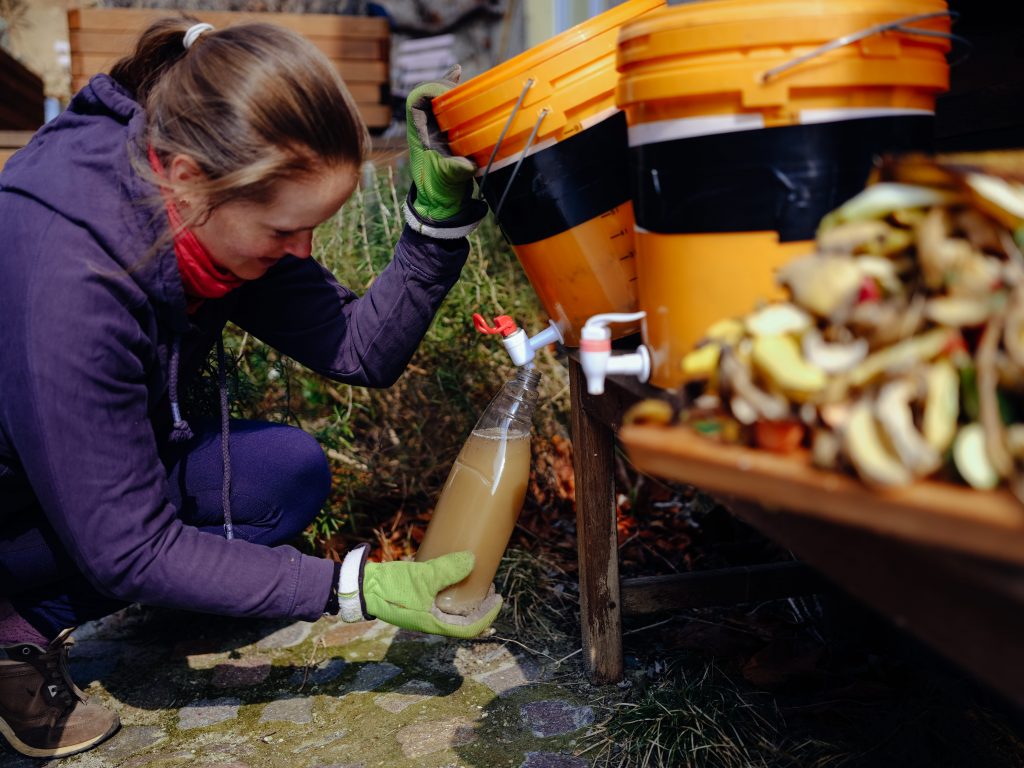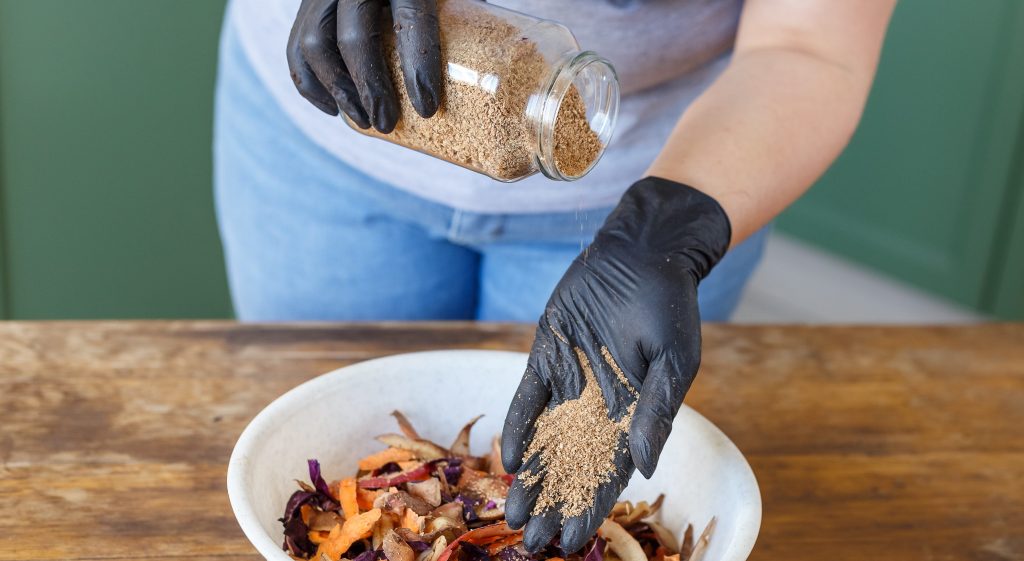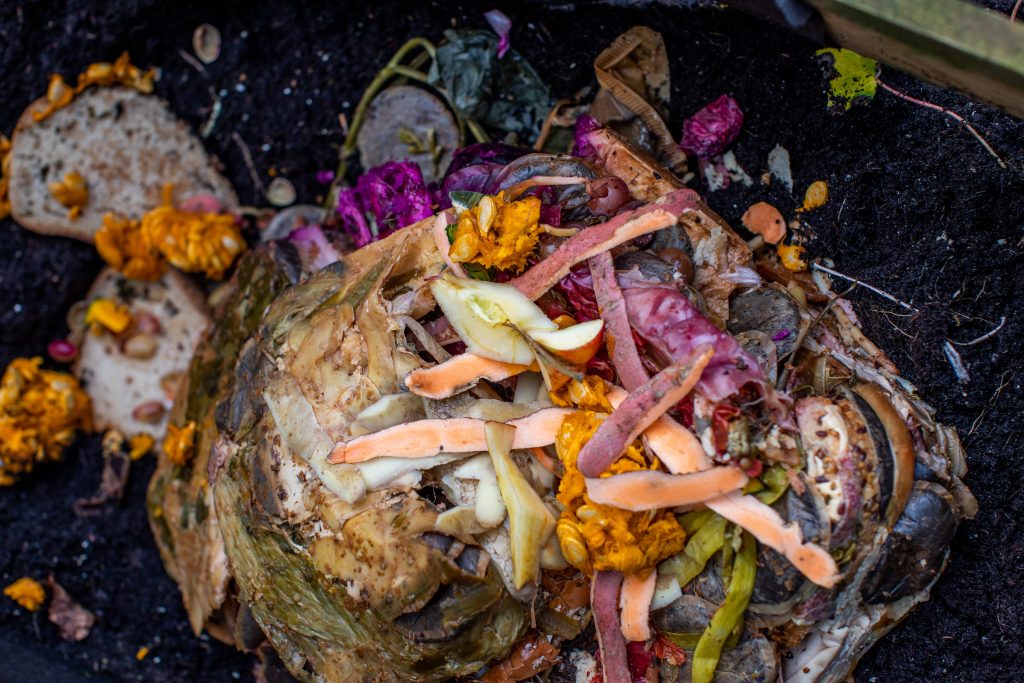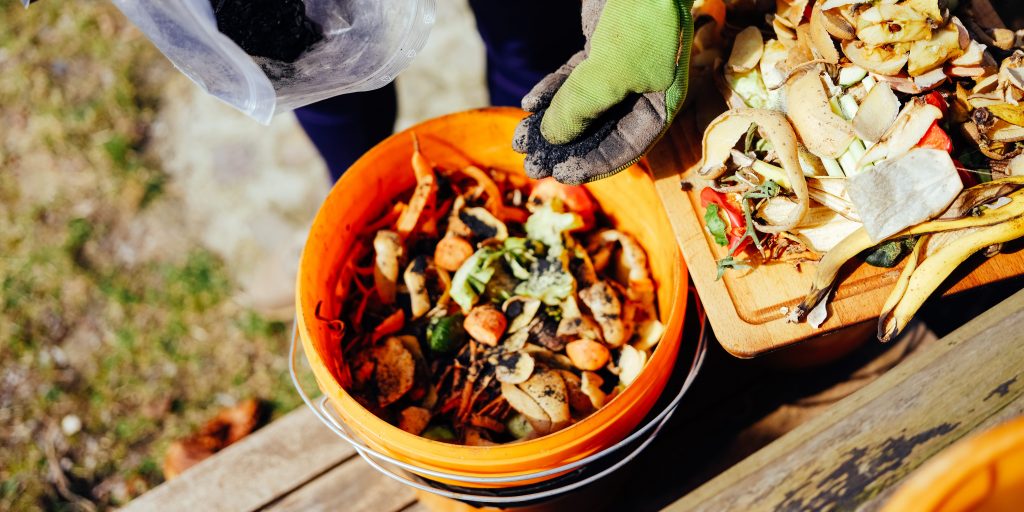Prices are accurate at the time of publication.
- Bokashi uses fermentation to break down food waste into beneficial pre-compost.
- The process takes place inside an airtight container, making it odor- and pest-free.
- Unlike traditional composting, you can add fats, meat, bones, and leftovers to a Bokashi container.
Composting can be messy. Not only does it take up outdoor space, but it also requires you to cultivate a delicate balance of carbon and nitrogen.
Imagine if, instead, you could skip ahead a few steps and simply bury waste in your yard, wait a few weeks, and be rewarded with soil that's ripe for planting. Reader, meet Bokashi composting.
What is Bokashi?
Bokashi relies on fermentation to break down food waste into a state where it can quickly decompose into a nutrient-rich garden addition.
Bokashi composting started in Japan in the 1980s with the discovery of effective microorganisms, or EM, by Dr. Teruo Higa. Higa discovered that certain microorganisms already found in nature — including lactic acid bacteria, yeast, fungi, and photosynthetic bacteria — work in tandem to improve soil and plant health, reduce harmful pathogens, and even treat wastewater by increasing beneficial biodiversity.
In Japanese, Bokashi translates to "shading off" or "gradation," as well as "fermented organic matter."
Bokashi vs. composting
Bokashi technically isn't composting, because nothing is decomposing during the process, but it can be a replacement or addition to traditional composting.
"The first stage is actually fermentation. The second stage, where you bury it, is decomposition," says Rod Reay, a master composter with the Bernalillo County Extension Service in New Mexico.
Here's how Bokashi differs from traditional composting:
| Bokashi | Traditional compost pile | |
| Oxygen? | No, anaerobic | Yes, aerobic |
| Process | Fermentation | Decomposition |
| Decomposers | Effective microorganisms | Bacteria, insects, earthworms |
| Yield | Pre-compost | Compost |
| Starting materials | Bokashi bran, kitchen waste | Some kitchen waste, yard scraps |
| Time to decompose | 4 to 6 weeks | Up to 12 months |
Benefits of Bokashi
There are lots of reasons why you might want to try the Bokashi method. Here are a few:
- Works with more types of waste. Bokashi is a good way to reduce food waste that you normally couldn't compost, like bones, meat, dairy, and leftovers.
- Faster turnover. Bokashi fermentation takes a shorter amount of time than traditional composting to break down.
- Less odor. Bokashi is anaerobic, so waste is closed off from oxygen, which tamps down on smells.
- No pests: Because there's no smell or outside access, and because the product of Bokashi is so acidic, you don't have to worry about bugs or rodents getting into it.
- Small space friendly. You can keep a Bokashi bucket indoors and in small spaces like apartments.
- Better for the environment. Bokashi does not release carbon dioxide or methane like landfills or, in smaller amounts, traditional compost heaps.
Here's how to get started with Bokashi composting:

How to start Bokashi composting
To get started, you need to set up an anaerobic environment and acquire Bokashi bran, which is how the effective microorganisms are carried to your Bokashi bucket. Bokashi bran is usually made from food industry byproducts like wheat or rice bran and EM-1, a commercial concentration of Higa's beneficial microbes.
You can make your own bran, but it yields a large amount and is best for sharing with a group of people. Pre-made Bokashi bran and Bokashi buckets are available from companies like SCD Probiotics and TeraGanix.
Reay recommends making your own Bokashi bucket. You can do this with any container that can stay airtight. There are several ways to do it. Here are a few of the simplest:
- Single bucket method. All you need is a bucket and a lid. If you're using this method, you will need to mix dry materials such as newspaper into your Bokashi bucket to soak up the extra liquid.
- Nested bucket method. For this method, you'll need two buckets. Drill holes in the bottom of one bucket (this allows the liquid to drain through) and nest it in the other bucket with no holes. Raey says this method can cause issues when it comes time to unnest the buckets and drain the liquid, so you may want to add a spigot at the bottom where the liquid pools.
- Modified bucket method. Place a grit guard or microwave splatter guard at the bottom of a bucket. The area at the bottom is where liquid will collect. You can add bee barrier on top of the raised guard to keep food from falling through. Add a spigot at the bottom for draining the liquid.

The Bokashi process
Once you have your supplies ready to go, you can start adding waste to your bucket. Here's a breakdown of the process that turns food leftovers into fermented pre-compost:
1. Start with a sprinkle of Bokashi bran. "What you're trying to do is incorporate this Bokashi bran into your organic matter as much as possible. So you just start with a thin layer on the bottom, and then you add your organic matter to that," Raey says.
2. Prep food scraps and add them to your bucket. If possible, cut or tear food pieces into 1 by 1 inch pieces before adding them to your bucket.
3. Incorporate Bokashi bran into scraps: Once you've added scraps to your bucket, sprinkle Bokashi bran over the new layer and incorporate with a stick, spoon, or spatula. Generally, you want to add a cup of Bokashi bran per gallon of organic matter. That's a tablespoon of Bokashi bran per cup of scraps.
4. Compress waste to remove air. Bokashi is an anaerobic process, which means it takes place without oxygen. Using a potato masher, press down the contents of your Bokashi bucket as much as possible, then cover with either a dinner plate or airscape. In his book, Footer recommends using a plastic bag on the surface to keep oxygen out. "The less air that you allow in, the better off you are," Raey says.
5. Repeat steps 1 through 4. Continue adding waste, mixing Bokashi bran into the new layers, and compressing air out until your bucket is filled up.
6. Let ferment for two weeks. Once you've filled up your Bokashi bucket. Make sure it's compressed and free of air. Place the top on it and note on a piece of tape the date you sealed it up. Leave it undisturbed for at least two weeks. This is when the effective microorganisms in the Bokashi bran will ferment or "pickle" your waste and make it much easier to break down in the soil. For the microbes to work, you need to keep your bucket at temperatures between 60 and 90 degrees Fahrenheit. If you let the bucket overheat, the microbes can die.
7. Drain out liquid periodically. The process does create liquid, which should drain to the bottom of your bucket, where you can empty it out. Check for this liquid, also called leachate or Bokashi tea, every other day to once a week. Raey warns that this liquid has an offensive smell to most people. Once you drain the Bokashi tea out, you need to use it immediately — more on that later.
8. Open the bucket. When you open the bucket after the fermentation process, it should not smell bad. Some people describe the smell as a pleasant, vinegary scent. Raey describes it as a sweet scent. If you see beneficial white mold or mycelium, the process has worked. However, seeing green or gray mold is a sign that something went wrong, in most cases it means that the bucket wasn't sealed well enough and oxygen got in. However, if your batch went bad, you can still bury it in the yard where it will continue to break down.
9. Bury the pre-compost in your garden or add it to your compost. Now, you can put your fermented waste to use. Though it looks very similar to when you put it in, it will quickly break down once you add it to dirt or compost.
Here are a few examples of what you should add to your Bokashi bucket — and what you need to avoid.
"The idea is that you're trying to get the good microorganisms to outcompete the bad microorganisms," Raey says. Throughout the process, it's important to keep in mind the balance of different types of waste that you add. For example, adding meat, pasta, and bones is fine in moderation, but you'll need to balance them out with more Bokashi bran. This is because they ferment slower than, say, vegetable peels.

How to use your Bokashi yield
Throughout the fermentation stage, you'll have to collect the liquid byproduct of the Bokashi process. And, after the fermentation stage, you'll have a bucket full of Bokashi pre-compost.
Here are some of the best ways to make use of them:
Bokashi liquid
During the fermentation stage, your Bokashi bucket will generate leachate or Bokashi tea. It doesn't smell good, but it comes with some benefits. One great way to use it? Put it down your drain, where the microorganisms will eat any grime that's accumulated. You can also add it to a compost pile, says Raey. Some people add it directly to their garden, but there's not much research showing that it has many benefits here.
Bokashi pre-compost
If you have a garden, the best way to use Bokashi pre-compost is to bury it there. Dig a hole or trench 12 to 18 inches deep. If you live in a dry environment, add a little bit of water in the bottom of the trench. Then, pour in the contents of your Bokashi bucket. Mix it with some of the surrounding soil, then cover it with at least eight inches of soil. Soak the area with water "to get the process going," Raey says. Then, you can cover it with mulch. After 2 to 4 weeks, the area will be ready for planting.
If you live somewhere where the ground freezes or don't have outdoor space, you can use containers, such as large pots, a raised bed, or a trash can, to compost your Bokashi.
According to Raey, it's a great way to revitalize potting soil. Just mix two-thirds potting soil to one-third Bokashi, keep it moist, and, "That's good stuff!" Raey says.
You can also add it to an existing compost pile, where it will break down within a couple of weeks.
Insider's takeaway
Once you get the hang of it, Bokashi composting is a great way to reduce food waste and add nutrients to your garden.
Studies have shown that the addition of Bokashi and effective microorganisms to soil reduces harmful pathogens and nematodes. It also bolsters soil health, which in turn increases plant health and crop yields.
"Don't be turned off by what you may perceive as the complexity of this stuff. It's very simple," Raey says.
